Star Trek: Prodigy is back! The animated series’ second season contains an avalanche of references to previous Star Trek shows and movies to help center the show within the wider Star Trek canon, tease younger viewers about all the fun waiting for them in more than 900 other episodes of Star Trek, and reward the longtime fans and deepen their enjoyment of what they’re watching.
With 20 new episodes, we’ve revived our Canon Connections series to recap the references, callbacks, and other cool Star Trek ephemera from the season’s first four episodes: “Into the Breach,” “Who Saves the Saviors,” and “Temporal Mechanics 101.”
* * *
“Into the Breach, Parts I and II”
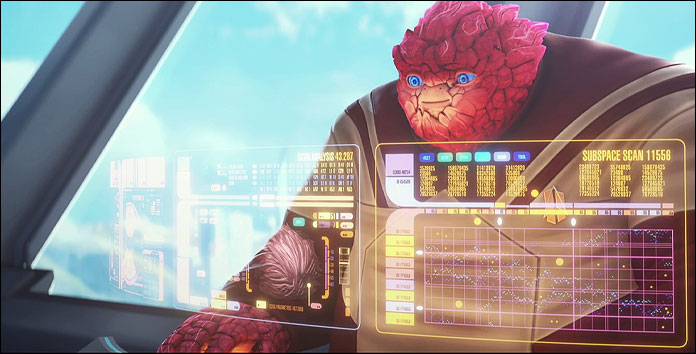
Polygeminus Rex — Rok is in the middle of a presentation when she receives her summons from Janeway, about how she has potentially invented a way to slow the reproductive rate of the tribbles. In her presentation, Rok namechecks both Edward Larkin (the idiot from the Short Trek “The Trouble with Edward”) and one of the tribbles scientific names, “Polygeminus Rex” (which appeared on a chart in Keiko O’Brien’s classroom in the first season of Deep Space Nine.)
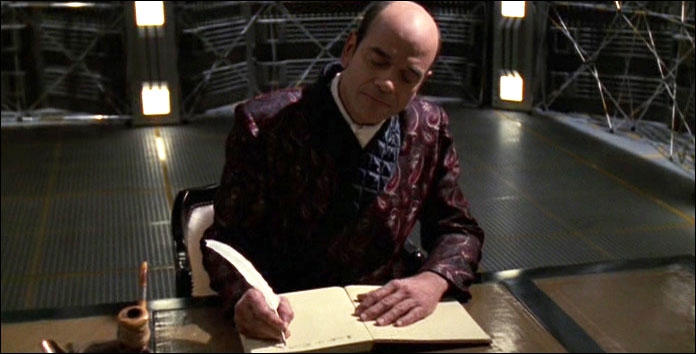
The Doctor and his Holonovels — The Doctor makes his first appearance in Star Trek since “Endgame,” with the first of several of the famous “I’m a doctor, not a…” catchphrases — and a reference to his holonovel “Photons be Free” from the late Voyager episode, “Author, Author.”
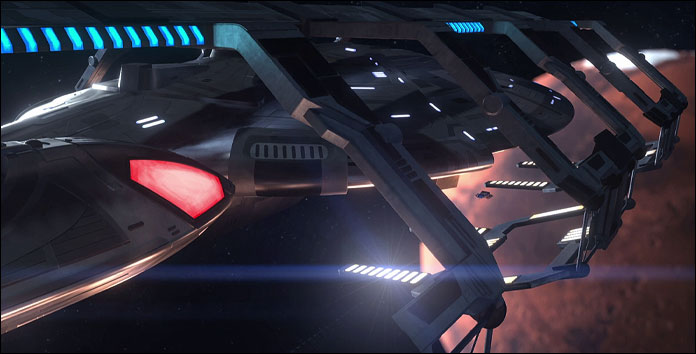
Voyager-A — The Voyager-A is in drydock in orbit of Mars, strongly implying it is docked at the Utopia Planitia shipyards above that planet. The Doctor makes reference to the original Voyager being part of “a floating museum,” as seen in Star Trek: Picard’s third season.
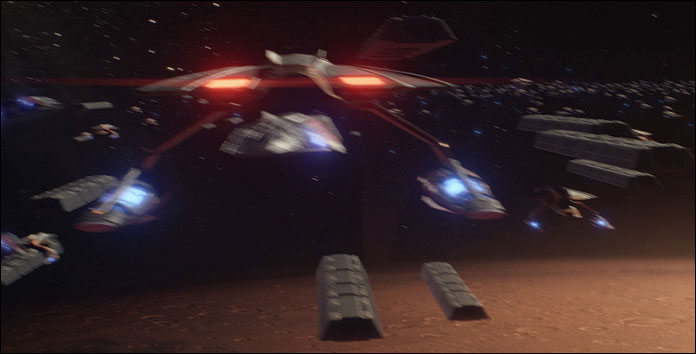
Romulan Evacuation — The Doctor also namechecks the ongoing evacuation of Romulus, which at this point is being directed by Admiral Jean-Luc Picard to evacuate the Romulan homeworld (and surrounding colonies) to save people from the effects of the expected Romulan supernova.

Slipstream — The Voyager-A is equipped with a slipstream drive, a technology discovered by Voyager on its journey to the Alpha Quadrant (and seemingly perfected upon their return to the Alpha Quadrant).

Cetacean Ops — Seen in more detail later in the season. Prodigy is the second show to depict Cetacean Ops (after Lower Decks), a starship locale obliquely referenced in The Next Generation episode “The Perfect Mate,” after being initially created as a concept for the Star Trek: The Next Generation Technical Manual.

Turbolifts Move Both Ways — After many years of being seen in ship schematics and in action sequences like Discovery’s “That Hope is You, Part II,” it is only now confirmed in dialogue that turbolifts in the 24th century move both vertically and horizontally through the ship to get its passengers to their destination.

First Contact Protocols — Gwyn thoroughly reviews Starfleet’s First Contact protocols before arriving on Solum. These are the formal set of rules and procedures that govern the Federation’s First Contact processes, previously mentioned in episodes like DS9’s “Captive Pursuit,” and Discovery’s “Si Vis Pacem Para Bellum.”

Nova Squadron — Maj’el is a member of Nova Squadron, the elite corps of Starfleet Academy cadets established in the Next Generation episode “The First Duty.”
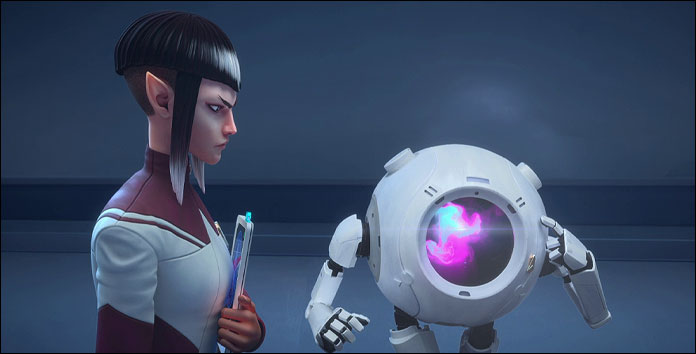
Vulcan Telepathy — Maj’el states that Vulcan telepathy is enhanced in the presence of other telepaths, something we’ve seen in previous Star Trek episodes like Voyager’s “Random Thoughts.”

Delta Radiation — Zero contends that warp cores are beautiful up close because of the delta radiation that they emit, which was first established in “The Menagerie, Part I” and seen in later Star Trek episodes like “In a Mirror Darkly, Part I.”

Sonic Toilet — After years of references to sonic showers in Star Trek, we get our first-ever reference to a sonic toilet. The bidet of the future, I suppose?
“Who Saves the Saviors”

Vulcan Headband — Maj’el hides her Vulcan heritage with a headband, just like Spock in Star Trek IV: The Voyage Home.

A Closed Loop — While discussing their need to make their trip to the future a closed time loop, so that the Protostar returns to Tars Lamora, Maj’el provides examples of other closed temporal loops: the Bell Riots (seen in the Deep Space Nine two-parter “Past Tense”) and the “Cochrane warp tests,” a reference to Zefram Cochrane’s first flight of the Phoenix in Star Trek: First Contact.
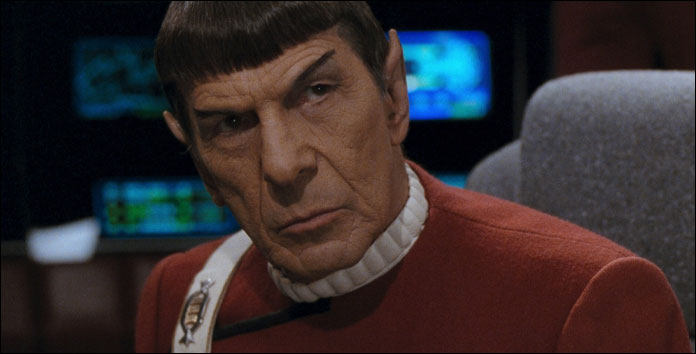
Vulcans Don’t Lie — Maj’el repeats the often-cited fact that Vulcans don’t lie, echoing Spock from episodes and movies past like Star Trek IV: The Voyage Home.
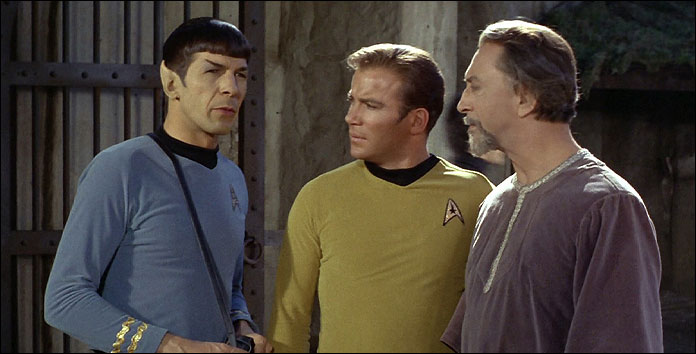
Galactic Traders – Dal and crew hide their identity from Captain Chakotay and Commander Adreek by posing as “galactic traders,” likely a winking nod to Kirk and Spock’s disguises on Organaia in “The Errand of Mercy.”

Hello Again, Old Friend… — When Dal lays eyes on the Protostar, he says “Hello again, old friend…” echoing Captain Jean-Luc Picard’s words upon returning to the USS Stargazer for the first time since it was abandoned after the Battle of Maxia in “The Battle.”

In Another Time… — Dal tells Chakotay that “I’d like to think in another time, we could have been friends.” The Romulan Commander said the same words to Captain James T. Kirk at the end of their battle in “Balance of Terror” (and to Captain Pike in the Strange New Worlds episode “A Quality of Mercy”).
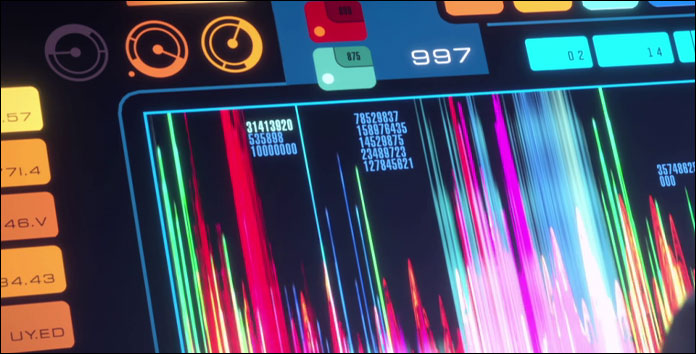
Chronitons and Tachyons — As the timeline changes, Voyager detects chroniton emissions and tachyon irregularities, two common side effects of time travel as seen in episodes like Voyager’s “Before and After” and “Fury,” and The Next Generation’s “All Good Things…”
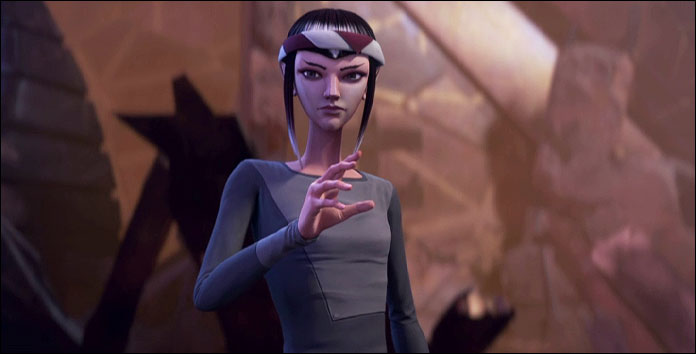
Vulcan Never Pinch or Hand Chop? — When Chakotay calls out Maj’el for her Vulcan Nerve Pinch of a Solum baddie, Dal says, “A Vulcan what? That was more of a hand chop. Everyone does that.” Surely a salute to the myriad of hand-chopping happening in Star Trek through the years.
“Temporal Mechanics 101”

Sacagawea — Gwyn’s shuttle was the Sacagawea. A shuttle of the same name was part of the complement of shuttles on Voyager, and appeared in Season 3 episodes like “Macrocosm.”

Cryptic Text Messages — Using a cryptic text message to set a character on a particular direction is a favorite of Wesley Crusher, as previously seen in Picard Season 2.
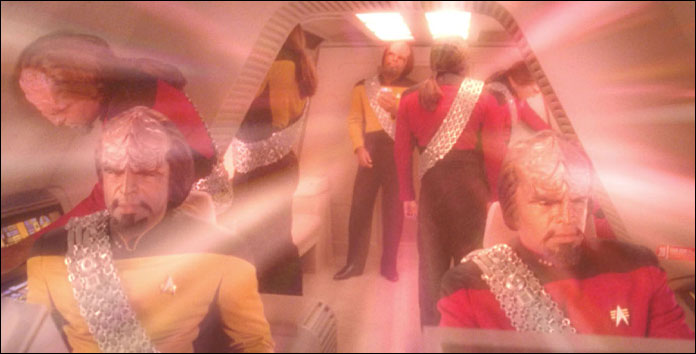
Quantum Signature — Gwyn’s quantum signature is displaced by changes to the timeline. The quantum signature is a specific marker for identifying which timeline someone originates from; it was explored in most detail in The Next Generation episode “Parallels.”
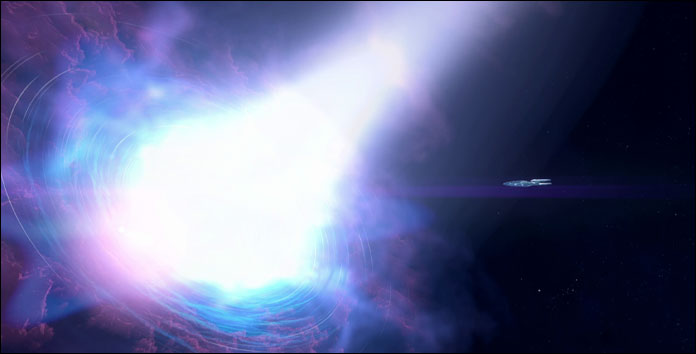
Interspatial Flexure — The wormhole is referred to as an interspatial flexure, a specific type of wormhole first named in Voyager’s “Counterpoint.”
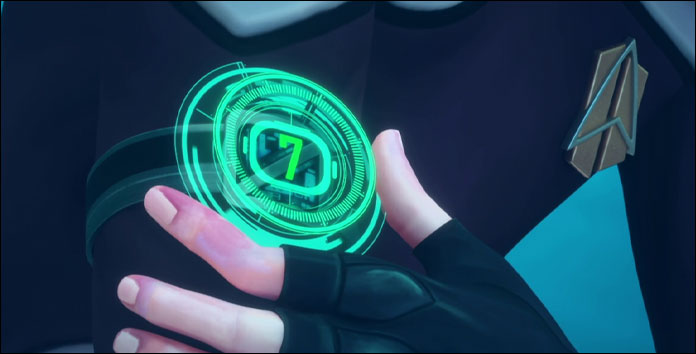
Phase Discriminator Temporal Stabilizer — The Doctor invents a device that allows Gwyn to continue to exist in the timeline despite its changes, utilizing a phase discriminator. A similar armband allowed Picard, Data, Geordi and Deanna to travel between different temporal states in “Timescape.”
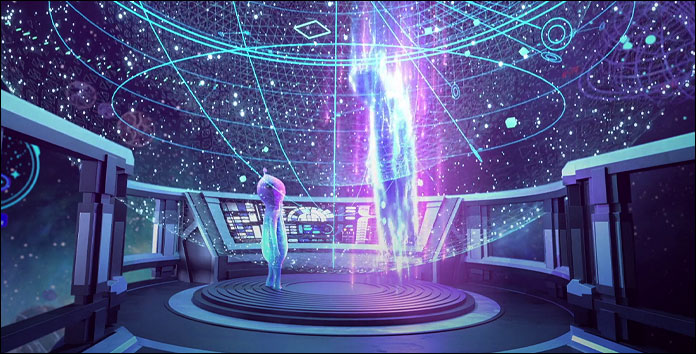
Stellar Cartography — Murf’s meeting with the mysterious light being (who later turns out to be Wesley Crusher) takes place in the ship’s Stellar Cartography lab, modeled off the version of Stellar Cartography seen in Star Trek: Generations.
![]()
We’ll be back with more Canon Connections soon, covering the next four episodes of Prodigy Season 2. Did we miss any of your favorite connections? Share them in the comments below!
Star Trek: Prodigy Season 2 is available to stream now on Netflix globally (excluding-Canada, Nordics, CEE, Netherlands, Spain, Portugal, Poland, Russia, Belarus, and Mainland China). The show can also be viewed on SkyShowtime in the Nordics, the Netherlands, Portugal, Spain and Central and Eastern Europe.
